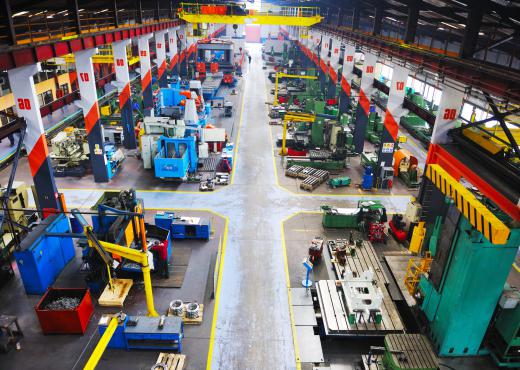At AboutMechanics, we're committed to delivering accurate, trustworthy information. Our expert-authored content is rigorously fact-checked and sourced from credible authorities. Discover how we uphold the highest standards in providing you with reliable knowledge.
What Are the Different Types of Process Control Applications?
Process control applications are used by many businesses and manufacturing plants to automate some or all of the tasks, and these programs are often differentiated by the type and amount of work they do. Batch process control applications are used to tell machines how to combine raw materials to make a product. Single-loop applications are the most basic, because these are only able to perform a single function, such as turning a machine or valve on and off. Continuous applications manage and perform tasks such as heating water in a boiler or stirring materials without stopping. Distributed control system (DCS) applications are complex and capable of starting and shutting down everything in a plant.
When a product is being made, raw materials often have to go through the same process continuously. For example, several raw materials may have to be heated to a certain point before they chemically bond or change. Instead of making human workers do this same task continuously, batch process control applications can perform this repetitive function. The applications are often told how long to keep machines operating or are given variables such as heating materials to a certain point before stopping.

Single-loop process control applications are just simple relays, but they can be beneficial for a manufacturing plant. These applications are usually able to control just one machine or valve at once, and they can make the machine or valve turn on or off. They can be timed, so they turn a valve on every 15 seconds, for example. Several single-loop applications can be used simultaneously to properly sequence large operations.

Continuous process control applications are similar to batch applications, because they are made to run for long periods of time. Unlike batch applications, which are given variables and instructions to stop at a certain point, continuous applications are made to keep running without interruption. For example, where batch applications will heat materials at a certain temperature for a few minutes, continuous applications will keep the heater at the same temperature until told to stop.
DCS process control applications are one of the more complex systems, because they are able to control a large number and variety of machines, and they typically can handle many different variables. All the controllers in a manufacturing plant can usually be set through DCS applications, entirely automating a plant. These applications also are able to start and stop everything in the plant, even without human interaction.
AS FEATURED ON:
AS FEATURED ON:












Discuss this Article
Post your comments